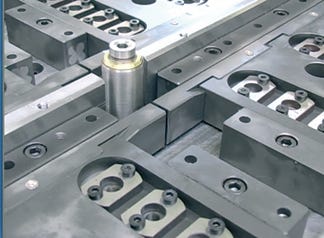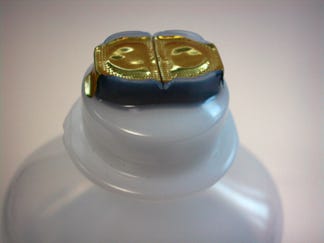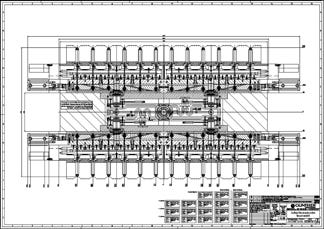It took intense supplier collaboration to create a new type of production line for the infusion solutions of medical OEM B. Braun, and one key ingredient was hot runner needle shut-off technology in a purpose-designed system.
February 8, 2010
It took intense supplier collaboration to create a new type of production line for the infusion solutions of medical OEM B. Braun, and one key ingredient was hot runner needle shut-off technology in a purpose-designed system.
The globally recognized, German-based medical OEM B. Braun has high standards, not just for its products, but also for how they are made. For example, when it wanted three new production lines for the infusion solutions produced in its Melsungen, Germany facility, it chose the name LIFE, which stands for Leading Infusion Factory Europe, for the project.
|
The LIFE lines would replace existing multistep production, and its inherent risk of contamination between steps, with a completely automated inline process that starts with molding the 500-ml polyethylene (PE) bottles, filling them, sealing them, labeling and packing them into cartons, and conveying the cartons to a storage location. The entire process up to storage would be done in a cleanroom to avoid contamination.
Closure encapsulation a challenge
The filled bottles are sealed using a specially designed injection molded cap, which is then overmolded with PE to encapsulate it and provide a liquid-tight seal between the cap and the bottle. For the overmolding of the cap that is already on the bottle’s neck, the cavities must be filled uniformly with melt. Any variation would risk overfilling one or more cavities, which would mean that a fully made, filled, and capped bottle would go into a reject bin.
The objective was to have uniform cavity filling for the overmolding at a relatively low injection pressure. This meant very strict tolerances for the gating point and the overall stability of the process. B. Braun’s project managers put together a team of specialists from the German headquarters of hot runner supplier Günther Heisskanaltechnik GmbH (Gunther Hot Runner; West Chicago, IL) and injection molding system supplier Arburg (Arburg Inc.; Newington, CT). The goal was to have a perfectly matched combination of mold, injection system, and hot runners yielding process stability and reliability in a shorter cycle time than the system being replaced. This is a volume operation.
The hot runner system had to fill 24 cavities with 1g of PE each at a minimum pressure loss. Each of the five special molding machines holds four six-cavity molds arranged in two rows. The motive behind having four molds is that each mold can be replaced separately and quickly. Likewise, the hot runner nozzle features pluggable thermal and power connection that allows replacement without completely dismantling the wiring.
This system uses Gunther’s 5NLT nozzle, which is screwed into the manifold. This needle-valve nozzle is designed for tight spaces such as those in this tooling. For actuating the needle valves, each of the four molds has its own drive unit, and each is separately controlled. Consisting of a lifting plate, specially coated guide rails, and a pneumatic-drive cylinder, the drive unit ensures precisely repeatable opening and closing of the gate points. Each drive cylinder can be removed without mold disassembly and needle position can be adjusted while installed.
The melt is distributed in a manner similar to that employed in a stack mold, with a main manifold that includes a connector and heated transition elements that allow easy exchange of the individual six-cavity molds. All wear parts are designed such that they can be swapped out easily, avoiding nozzles clogging, poor part filling, stringing, and poor gate quality, while supporting shorter process times. Generally, the cycle time can be reduced by about 20%.
How well did the system meet objectives? Very well. It was operating at full capacity within a year of its setup, meeting the strict requirements for cycle time reduction, process reliability, and high optical quality of the gating point. As a result, B. Braun expanded its use of the technology in Europe, and after a couple of years installed it in other countries including Malaysia, Indonesia, and Brazil, and it will be adding the system in Argentina within the next two years. —Rob Neilley
Special thanks for technical information to Jörg Essinger, application technology manager at Günther Heisskanaltechnik in Frankenberg, Germany.
About the Author(s)
You May Also Like






